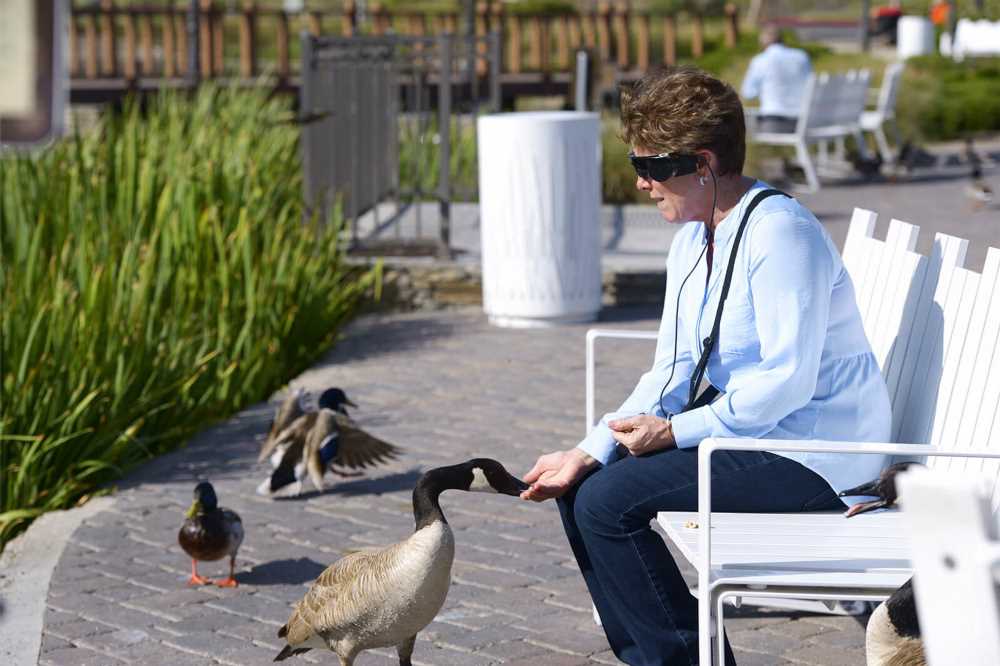Researchers have invented new bionic eye technology that allows patients to “see” again through special glasses that send electrical signals to an implant in the wearer’s brain.
These signals stimulate the implant so it gives a pattern of light to the visual cortex of the brain, which can be interpreted as a visual image.
Scientists from visual prosthetic company Second Second Sight Medical Products are trialing the artificial vision tech, called the Orion Visual Cortical Prosthesis System, in a small number of patients.
It consists of a small camera on a pair of glasses, a brain implant and a processing unit that the patient can wear on their hip.
The camera on the glasses captures images which it then sends to the video processing unit and this then converts what the wearer is looking at into electrical impulses that create a perceived image on the wearers brain via brain implant stimulation.
This tech is based on the fact that the brain plays the biggest role in enabling us to see things, leading the researchers to think that bypassing damaged eyes and optic nerves by transmitting electrical pulses directing to the brain is possible.
The brain implant is installed above the occipital lobe during surgery on the back of the patient’s head.
This involves an overnight stay in hospital and a three to four week recovery period before the tech can be officially turned on.
Second Sight CEO Will McGuire told Engadget: “They put the electrode array in there between the two halves of the brain against the visual cortex.
“Then they basically screw the electronics package into the skull, just next to the craniotomy.”
The brain implant consists of a small transmission coil that can receive data and power wirelessly.
There is then a fairly long adjustment process during which a user must get used to seeing and interpreting light as it is a natural human instinct to look away from it.
An Early Feasibility Study at UCLA Medical Center and the Baylor College of Medicine in Houston is now taking place to make sure the technology is safe for larger trials.
Of the five blind men and one blind woman who has been installed with the tech already, only one reported a serious adverse effect, which was a seizure.
The team thinks that their tech is safe and hopes to get FDA approval for the device later this year.
They also have big plans for how to improve the system and would like to turn it into a “Predator”-style thermal imaging device.
McGuire told Engadget: “It would be good for them to have that as kind of a mode perhaps, in which they could switch to thermal imaging.”
“And they can identify where people are in the room, day or night, more easily. They could maybe identify the hot part of a stove or cup of coffee, things like that.”
Source: Read Full Article


